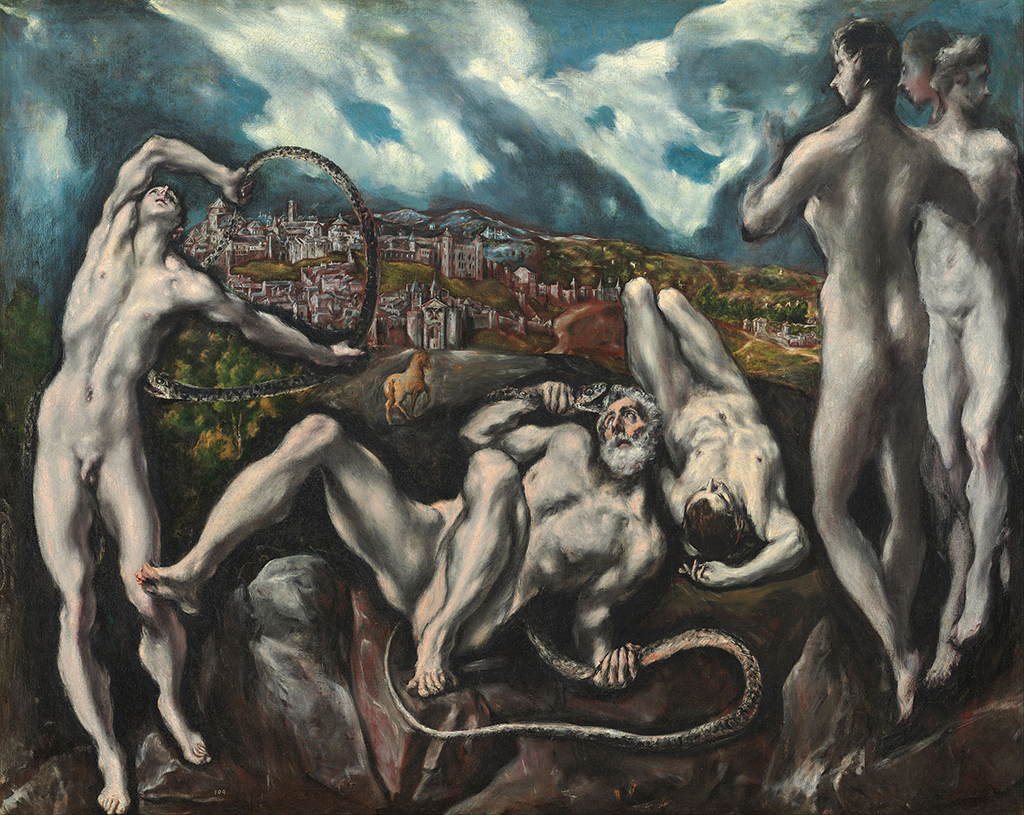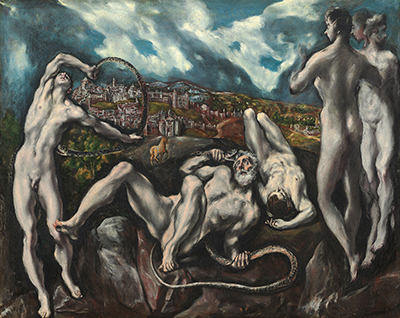Created between 1610 and 1614, ‘Laocoon’ represents a break from Renaissance concepts of harmony and balance. Instead, the oil painting depicts and emotional scene with distorted figures more in line with the Mannerism art movement.
The painting shows the death of Laocoon, a Trojan priest of Poseidon. It also depicts the deaths of Laocoon’s sons, Antiphantes and Thymbraeus. The three are shown being strangled by sea serpents as punishment from the gods after the priest tried to warn his countrymen of the Trojan Horse sent by the Greeks to win its war against Troy.
‘Laocoon’ was painted by Doménikos Theotokópoulos, also know as El Greco or The Greek. The original is part of the National Gallery of Art’s collection in Washington. It measures 142 by 193 centimetres, or 56 by 76 inches. ‘Laocoon’ is influenced by classical mythology and artistry. El Greco’s inspiration was likely a first century BCE marble sculpture capturing the moment of the execution of Laocoon and his sons. Rediscovered in Rome in 1506, the sculpture was originally created by Agesander, Athenodoros and Polydorus. It inspired several artists during the Renaissance thanks to the piece’s graceful figures and near-perfect proportions.
El Greco’s interpretation of Laocoon’s demise places the priest as the central figure. He is lying in agony while the lifeless body of one of his sons is lies next to him. Another son is shown battling an attacking serpent. Looking on at the right are Apollo and Artemis along with an unfinished figure with only a head and leg. Discarding rules of proportion, the figures are show stretched out and twisted.
The distorted and unnatural positions of Laocoon and his sons add a sense of suffering and chaos, while the dark colours add a sinister element and intensity to the scene. In the background of ‘Laocoon’ is the Spanish city of Toledo in turmoil. One explanation for using the city is the local legend that the people of Toledo are descendants of the Trojans. The painting shows the Trojan Horse approaching the city, reminding the viewer the Laocoon failed in his attempt to convince the people of Troy about the impending invasion.
The style of ‘Laocoon’ is influence by Mannerism, a movement that began in Italy in the early sixteenth century during the Protestant Reformation. The uncertainty and turmoil of the period influenced painters to let go of Renaissance concepts of balance and proportion. In ‘Laocoon’ and other Mannerist paintings, this is especially evident by using elongated figures. El Greco represents the peak of Mannerism. In ‘Laocoon’, the distorted figures of the dead and dying subjects are contrasted with the gracious appearance of the gods watching them suffer.
Born in 1541, El Greco was renowned as a master of the Spanish Renaissance. The Greek artist was born in Crete when it was part of the Republic of Venice. He trained within the Post-Byzantine art tradition that was centred in Crete. At the age of 26, El Greco moved to Venice. By 1577, the painter and sculptor was living in Toledo. It was in the Spanish city that El Greco produced he most famous work and received major commissions. El Greco died on 7 April 1614 in Toledo, a city where he spent his later years painting and studying.
A precursor to Expressionism and Cubism, his art often reflected dramatic and expressive images that only gained a full appreciation during the twentieth century. His paintings usually combined Byzantine and Western styles. He is best known for creating tortured and elongated figures, like what is seen in ‘Laocoon’. Many of his contemporaries opposed his work since their style went against principles widely used at the time. El Greco’s work was rediscovered during the twentieth century and influenced work by Eugène Delcroix, Édouard Manet, Paul Cézanne, Pablo Picasso, Jackson Pollock, and others.





